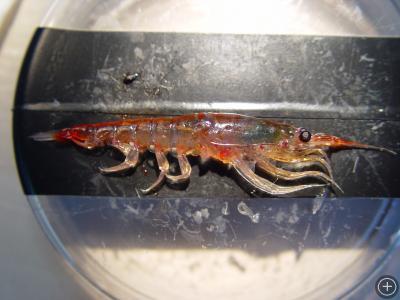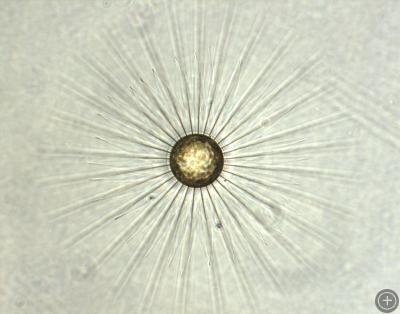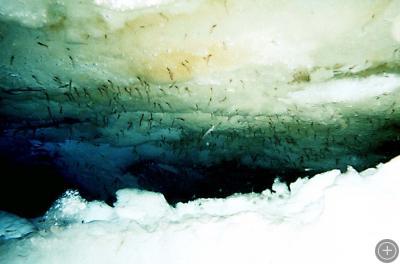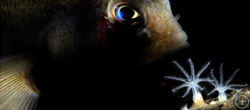Antarctic Marine Ecosystem

Sea stars are common sights on the bottom of Antarctic seas, clustering under holes and cracks in the ice where seals congregate. Photo copyright John B. Weller.
Dip a net into coastal Antarctic waters and you’re likely to pull up more than a few pinky-sized shrimplike crustaceans. These are krill, and if they look like small-time players in the game of life, it only goes to show exactly how deceiving looks can be.
The Antarctic food web is the simplest on the planet, and krill are at its hub. An estimated 500 million tons of krill live in the Southern Ocean, making this the most abundant animal in the entire world. Krill are such a universal food in Antarctica that for almost every animal that lives here, a “three degrees of krill” rule applies: You are krill, or you eat krill, or your food eats krill.
Whales, seals, penguins, albatross, petrels, fish, squid—every animal species living in Antarctica depends directly or indirectly on krill for survival. This heavy reliance on a single species makes the Antarctic ecosystem an unusually fragile one, particularly since many animals—including baleen whales such as the humpback, fin, minke, and blue whales—eat krill almost exclusively.
Krill, in turn, filter-feed on the abundant phytoplankton in the open ocean. In winter, they also gorge themselves on the ice algae that grow on the underside of the pack ice. A single krill can scrape clear the algae from a square-foot (.09 m2) patch of ice in ten minutes, zigging and zagging back and forth lawn mower–style.
Extra cold winters are a boon to most animals living in Antarctica. Colder winters mean more pack ice, and more ice algae to feed more krill, which means more food for all. In warmer years, when the pack ice is reduced, there’s a measurable decline in the krill population, sending shock waves of scarcity through the shallow Antarctic food web.
Even in good years, competition for krill can get fierce. Biologist David Ainley discovered that minke whales drive Adélie penguins from the best krill feeding zones, forcing the penguins to venture farther afield or switch to hunting fish. Humans have also joined the fray, using nets to harvest roughly 100 million tons of krill each year for use in animal feed, dietary supplements, as fish bait, and also for direct human consumption.
Researchers fear that global warming and dwindling pack ice are likely to pose serious challenges for the Antarctic ecosystem. In the short term, however, there is one perk to warmer temperatures: an increased number of icebergs. Marine scientist Maria Vernet has found that these floating oases deliver nutrients to the surrounding water as they melt, creating flourishing (if temporary) mobile ecosystems on and around the bergs.














